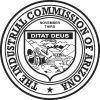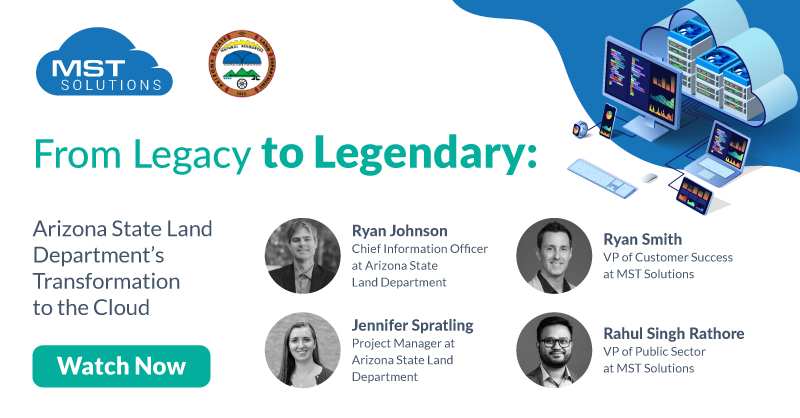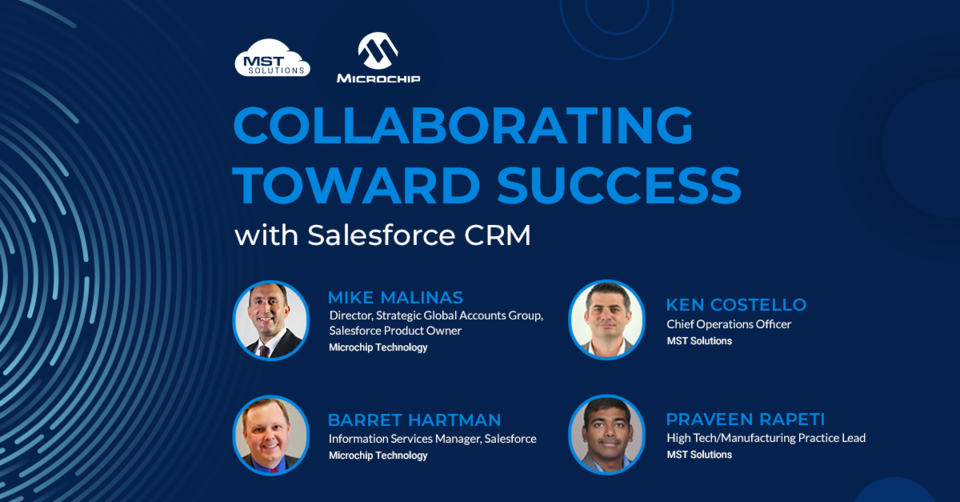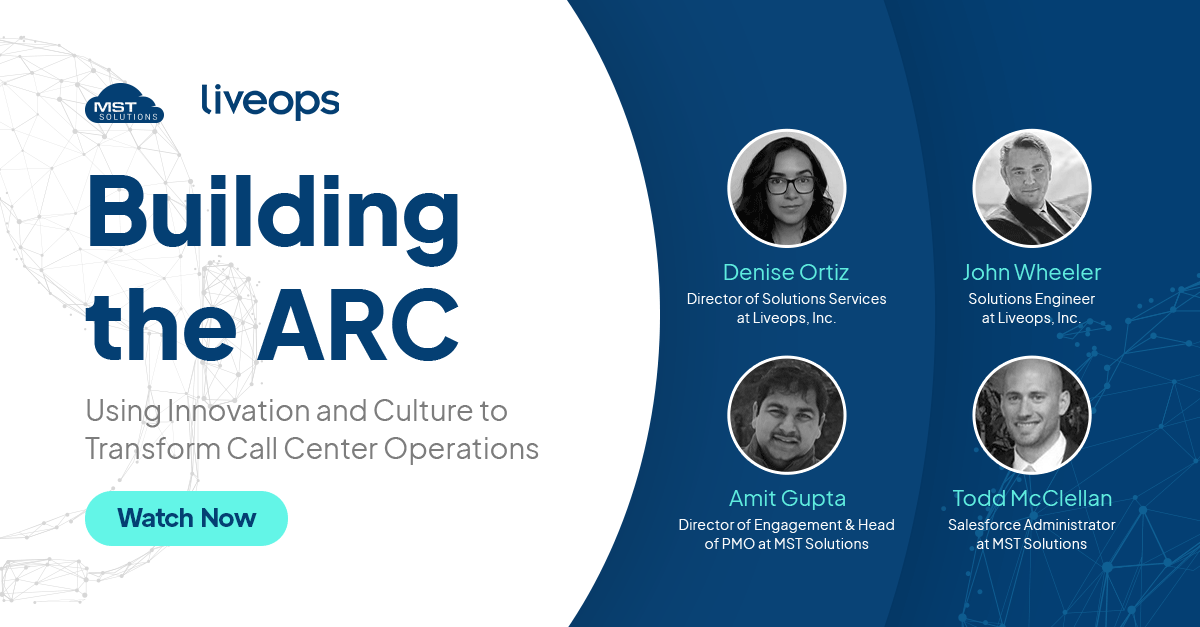Julie Hill: Hi everybody.
Jennifer Capestany: And we’ll be speaking to Rahul Rathore. Rahul is a Practice Lead for the Public Sector at MST solutions. He coordinates across all members of a project’s task force to ensure smooth project rollout and leads the charge for change management activities and successful implementation.
Welcome Rahul.
Rahul Rathore: Hi, everyone. Excited to be here.
Jennifer Capestany: Last, we’ll be speaking to Ryan Smith. Ryan is our Practice Director for Public Sector at MST Solutions. He oversees the end-to-end service delivery and contract fulfillment for our public sector. Ryan?
Ryan Smith: Hello and welcome everyone.
Jennifer Capestany: Yes, we’re going to jump right in then and start. Let’s hear from Ryan on the scope of today’s webinar.
Ryan Smith: Awesome. Well, thanks Jennifer.
So, it’s almost May of 2021 just coming up and hard to believe it’ll be two years since the project we’re about to talk about went live. So, this is to me, really another milestone for the ICA and that we get to take a deep dive and really share the nitty-gritty story with the broader audience.
We’re really excited to discuss how the ICA advanced their critical mission. They’ve created new ways of serving their customers and constituents. And, really, they’ve become more cost-effective and efficient. And all through digital transformation, from a pre 21st century legacy system into the cloud, on Salesforce and MuleSoft platforms with data stored on cloud.
So, we’re pretty excited about what we have to share today. Beyond learning more about what worker’s comp does as a business, this panel really aims to provide relevant information, lessons learned for those who are considering a similar project or potential investment, or for those who would like to learn how Salesforce and MuleSoft can really solve for the most complex government use cases, such as workers compensation.
And maybe they’ll learn how they can realize long-term benefits of incrementally growing their operation onto the platform. Really resulting in an agency that can meet goals like, our Governor Ducey here in the state of Arizona, a goal of operating at the speed of business. But before we get into that, let’s get to know the ICA a little bit better.
Jason, could you tell us a little bit more about the ICA?
Jason Porter: Yeah. Great. Thank you all. And welcome. Thanks for being with us today. Let me, just introduce you to the ICA. So, the Industrial Commission of Arizona was founded in 1925, just a few years after the Spanish flu pandemic ended. The agency was initially created as a result of legislation implementing the constitutional provisions that established a workers’ compensation system in Arizona.
And since that time, the role of the commission has expanded to include other labor related issues, such as occupational safety and health, youth employment, resolution of wage, minimum wage, and earn paid, sick time disputes, vocational rehabilitation for injured workers and oversight of self-insured employers.
The commission’s work is overseen by a five-member commission and our work is primarily handled in five primary business units. These divisions include our claims division, administrative law Judge division, the special fund, the Arizona department of occupational safety and health and the labor department.
For today’s purposes, we’re going to be focusing on how we use Salesforce to modernize our operations in both our claims and our ALJ division. So let me just tell you a little bit about those two divisions. So, although all participants in the workers’ compensation system play an important role, effective administration by our claims department is critical to the system’s overall success.
The claims division performs the regulatory role to ensure that all workers’ compensation claims are processed in compliance with Arizona laws. And we ensured that the commission fulfills statutory duties and responsibilities. Our claims division is one of our largest divisions in our agency and it serves a number of complex functions, including claim matching and notification, average monthly wage and loss of earning capacity determinations, processing of bad faith and unfair practices claims.
And they review all notices that are filed by system participants. The division also maintains the official record for all Arizona workers’ compensation claims and provides training and instruction to system participants. Just to give you a little context, the claim division oversees the filing of approximately 70,000 workers’ compensation claims each year and currently maintains records associated with over 7 million workers’ compensation claims. Our ALJ division briefly, is the administrative tribunal of the industrial commission with jurisdiction over disputes that arise under the workers’ compensation act and some types of labor cases.
The ALJ division for context of adjudicates between 5000 and 7,000 workers’ compensation disputes each year. And these, disputes can arise in many different contexts in a workers’ compensation claim, including compensability disputes, entitlement to active medical care or temporary wage loss benefits, supportive care, medical care issues, and permanent disability issues.
So that’s the ICA in a nutshell.
Jennifer Capestany: Thank you, Jason.
I think this is a great point to talk a little about the challenges in ICA and specifically the claims and the ALJ divisions that were major factors driving the team’s decision to make such major updates to your technology. And I’m thinking, Jason, if I can just pass the baton right back to you to get us started there.
Jason Porter: Sure. Great. Thank you, Jennifer.
So back in 2017 Governor Doug Ducey, challenged state agencies, like the Industrial Commission to change the way that government thinks and operates, to achieve his goal of having Arizona be the number one state to live, work, play, visit, recreate, retire, and get an education.
Governor Ducey encouraged agencies to embrace results driven management systems to transform the way that we serve Arizona citizens. He challenged government to operate at the speed of business, to embrace innovation and implement a culture of continuous improvement. So, with the governor’s challenge and an agency mission to be an innovative and service focused leader in administering workers’ compensation claims, we knew that it was time to take a close look at our internal processes and our aging computer system. Although the agency had a vision of where we wanted to go, we faced a number of high-level challenges in getting there.
Let me just mention a few today.
So first, the agency’s business operations were highly siloed in the various businesses. Cross-divisional collaboration and problem solving really wasn’t part of the agency’s culture, which resulted in difficulties and conflicts when issues touched multiple business units. Second, the organization’s business processes were spread across multiple isolated technologies that were in many cases, antiquated and not scalable.
Although the claims and ALJ divisions worked hand in hand to administer and adjudicate worker’s compensation claims, the claims division was using a largely unsupported 1990 cobalt, MS DOS-based system with little to no integration with the ALJ system. And our ALJ system was using a legacy Voyager system, just as a little show and tell here, this is one of the storage parts, of our old 1990 cobalt-based system. So, it gives you an idea of how antiquated a system we were working with. Third, the agency had limited ability to capture high-level data and conduct data analytics. Although the documents we received from many system participants contain a wealth of valuable data, our systems didn’t allow us to leverage that data, to discover problem areas or drive process improvements.
For agency, operations were largely paper-based resulting in inefficiencies and many problems associated with managing a large volume of physical documents due to the limitations with our legacy system and doing integrations with our legacy systems, even web forms, and emails in many cases had to be printed in order to be processed.
And then finally, and this is a really important point for our commission, our, customers didn’t have many options when it came to doing business with the agency, most documents that the ICA sent or received from our customers had to be mailed, had to be processed by hand and mailed. Our customers were extremely limited in, how they could do business electronically with the ICA, resulting in a large amount of onsite traffic here at our agency offices, a large amount of paper processing and significant in a fit. So those were some of the challenges we were facing.
To Ruby and then Jon, can you talk a little bit about what it was like working in the claims division and our ALJ divisions respectfully, with these challenges?
Ruby Tate: Yes, absolutely. Hi. So, the legacy cobalt system was, was delicate. It would go down often. And in fact, it was unsupported. I only know of one person in the whole world who knew how to program it and that person stopped working here. So, it was very scary when the system went down. And if it gives you any idea of the challenges, we actually had to manually change the date every single day. I had a sign hanging outside of my door to help us make sure we remembered that asked us and we had to walk past it every time we got up and left our offices to make sure that we change that date every day. Because if we didn’t change the date, the system would entirely have to go down. It would have to be rebooted. We’d have to reprocess all of our mail and it would be ours. And we have you know, almost 40 people here, on just in this division alone that would have to, that would be down, and we would not be operating. It wasn’t a complex learning curve.
It was really difficult to onboard new employees. If you guys remember a black and green screen, it was a black and green screen kind of computer system and, it wasn’t clickable. You couldn’t click anywhere. So, you had to learn all of these, special codes, these functions and controls and + signs and F7s and all these crazy combinations to be able to navigate.
And so not only did we have to learn how to use the system, but we also have to learn work comp and anybody who’s in the industry knows work comps complicated. So having to learn a complicated system on top of that is a significant challenge for any new employee. So, it would crash often.
And then we also had, as Jason referenced, our manual mail. Every person who issues mail on the floor would have to physically print it, physically make three copies for each interested party, physically print that envelope, all of those envelope’s stuff on, give them in the mail slot by two.
And of course, from two on, you couldn’t do any mail. So, it was a lot. So, you know, we’re happy with our new system. Jon, do you want to talk about ALJ?
Judge Jonathan Hauer: Yeah. Thanks Ruby. Hi everybody. So, from an administrative law Judge perspective, it was very strange that we had a division that was primarily adjudicating matters arising out of the claims division but didn’t have any real link to them electronically. When, files were referred to us, they were referred, as paper. We received a paper document from them, and we had, as Jason mentioned to the legacy computer system where we entered some of them information, but we weren’t really able to take full advantage of all the information that our claims division, which was administering all of these claims was entering into computer systems already. And on top of that as with the cobalt-based system, the Voyager system was difficult to modify, there was no end-user modification possibility for us.
So, this had three major impacts on the ALJ division. First, there was a major lag between the referral of a claim that needed to be adjudicated to ALJ. And the time that it landed in a Judge’s hands. That case essentially wound up in our division, had to be built out manually, both in the computer system and perhaps additional paper documents added to it.
And then it had to be distributed to a Vice Chief Judge who would then assign it to a Judge. It would touch multiple people, a pass-through multiple hands and eventually ended up on a Judge’s desk. That took time. As Jason mentioned, we had a type of portal, but it had very limited interaction with the community and no ability to file documents and in the modern era of court systems, this is very, very unusual.
And as a result, most parties would come into our ALJ division into a little review room we had set up and check out cases. And as Jason mentioned, with 5000 to 7,000 adjudications happening a year, it’s difficult to- one, keep track of those paper files and two, make sure that people don’t want them at the same time.
So, it also had its inefficiencies just because it required physical presence often, but it also had some logistical difficulties. And then, finally one of our biggest issues was filing, as Ruby and Jason both mentioned, we didn’t have a centralized mailing system, but we also didn’t have any sort of electronic filing system.
And what would happen is that these files would occasionally get backlogged. They would sit on somebody’s desk or not make it to somebody’s desk. And a Judge would have the unfortunate experience of appearing at hearing with a fairly large case file, but documents missing because they hadn’t yet been manually filed into their cases.
So, that was a great hardship and a big task for our administrative staff.
Jennifer?
Jennifer Capestany: Yeah, that definitely. Thank you very much, Jon. It sounds a lot, like ICA was getting really bogged down with a lot of manual paper-based processes and an aging system that was difficult to maintain, never mind scale and siloed data that limited your ability to leverage analytics. So, with all that in mind, how did you go about creating a roadmap for the change process, assembling a task force, establishing governance and so on.
If I could hand the baton to Julie? Julie, can you start us down?
Julie Hill: Yeah, sure. Thanks Jennifer. So, when the, ICA thought it was time to modernize their systems, the discovery process actually started months prior to the actual issuance of the request for proposal.
We worked with the claims and ALJ teams to fully document the current and future business processes. This prep work was really important because we did not want to just recreate the current processes, but rather enhance them to use the features of the selective solution. So, our goal was to find a solution that fit the business needs, instead of having the business process have to change and fit the technology.
So, I believe that the outcome was over 50 flow charts that we use to communicate the scope of the project in the request for proposal. Maybe we knew this was going to be a very complex project and the solution needed to address five main requirements. We really needed to replicate the current logic from the legacy systems that hasn’t been enhanced over a 25-year period.
And as we discussed, with limited documentation and subject matter expertise, also, we really needed to prepare a document for that. We also needed to have robust security features something that the current system was lacking, especially since per Arizona law, workers’ compensation files contain sensitive data and are confidential.
One of the main goals of the MIS division was to implement a single integration layer that would allow ICA to scale solutions with internal systems as well as external partners. So, and if necessary, you have the ability to switch out those systems without affecting the core business process. Also, the project would require a huge document and data migration effort to the cloud.
As Jason was mentioning, workers’ compensation claims are lifelong claims. So, record retentions are lifetime plus. So, I believe there was about 11 terabytes of data and documents to migrate. It consisted of close to 45 million records, including 3.8 million claims, 78,000 ALJ cases, and over $26 million.
So, a lot of data and documents need to be migrated to the new system. And finally, due to the age of the existing system, a phased implementation was not possible. So, a big bang launch was necessary. This required all of the critical functionality to be in place on day one and a long-term implementation timeline.
So, in order to overcome these business and technical hurdles, ICA looked to adopt a software as a service system with the state agreement for Salesforce and align with the state’s cloud-first strategy. So, we were created a request for a proposal to implement Salesforce service cloud, and community with MuleSoft as the integration layer. Throughout the scope or the request for the proposal process, MST was selected as the implementation vendor.
And the adventure began, as we say now, because it was sure an adventure. So, Ryan, do you want to discuss how MST approached the project?
Ryan Smith: Adventure, it has been. Yes. Julie, thank you so much. So, I think you guys can see, you know, by the team’s overview of the ICA, the challenges they face there really was a lot to unpack for this project.
And as Julie had mentioned, you know, prior to going to bed they did a lot of pre-work, which was very helpful. And so, to achieve the transformation, the ICA desired, we needed to take the time. To really understand the organization’s current state, we looked at that from a people process and technology lens, right?
So, this led us to define multiple customer personas. We needed to know exactly who those end customers were, to solve for them and really allowed the system to benefit them individually. We identified multiple divisions. I think you’ve seen an overview of that in this call. And of course, the stakeholders.
And then knowing there’s a high emphasis on compliance, considering the age of the systems being replaced and really the readiness of the organization for change. We had to take all of this analysis and more into consideration in designing the project governance structure. I won’t go into too much of those details, but I’ll share a little bit about the approach on how we designed the project which we felt really ultimately led us to success.
So, the project was designed as a program with multiple work streams. As an MST standard, we also utilize best practices across PMI (Project Management Institutes) from Alliance, of course, being a Salesforce expert, ensuring Salesforce architecture best practices and coding, best practices and standards.
And then from a velocity and a quality perspective, we like to run a continuous integration and development process through our Dev Ops practices. So that was kind of the infrastructure that got us moving and mechanically working together. But we, first began by writing a charter for each work stream that we defined so that we could define those scope and those boundaries, those roles and responsibilities. And then we collaborated on the guiding principles across those work streams. So, the four work streams were segmented, again, based on the understanding of the scope and the current state of the ICA.
So, the first word stream -Salesforce, where this team had the goal of translating the legacy system into the cloud platform and designing the system for scale. This team was also charged with translating that business process much of which was documented prior to, from that legacy state into a Salesforce state.
Another work stream we had was focused on integrations that you’ve seen at ICA as a highly data-driven organization, data coming and going often via paper EDI, the SFTP fax and other means. So, this workstream was really charged; with designing on how to solve for the complexity, with the data exchange, and really come away with a design that enabled an API based middleware platform which was really MuleSoft as you guys know.
Two more work streams. So, data migration that really was kind of the wild card as many would experience in projects, with years of legacy data history and the cobalt system, and Voyager, getting to understand and normalize and translate, that was really a big task.
So, this was one of the most important tracks to the project. And really the work began on this pretty early in the schedule. Last, but not least would be organizational change management. We carved out a specific track for this, knowing that there was a lot of complexity and just to keep our eye on the ball with how we would manage change.
And the ICA did a fantastic job of working with their external constituents and stakeholders, and really keeping them informed and trying to get them excited about what’s to come and how it will impact them and change. And so doing that early and throughout, and even after implementation, I think is, has been a great contributor to the overall success.
Finally, from a methodological perspective, we really had to figure out what’s the best approach for this. And we proposed a hybrid waterfall and agile approach. MST often recommends this for these types of projects. Then we jumped headfirst into discovery. This included activities like interviews and job shadowing, joint design sessions.
We looked at documentation that had been captured, SOP’s, training docs. We sampled data. We started to define personas. And do other requirements, definition and validation exercises and stuff. I think that lasted 6 to 10 weeks if I remember correctly. But from there Rahul came in and kind of took the project into execution.
So, I think this is a great time to turn it over to Rahul. And maybe he can share a little bit about those details.
Rahul Rathore: Thank you so much, Ryan, appreciate it. As Ryan mentioned we kicked off discovery to execute the project in a hybrid delivery model. We started with the goal to have at least enough information in the first six to eight weeks that can support our system design upfront. Team pre-prepared visual flow charts as Julie talked about it little bit.
Preparing the AS-IS process diagrams, we started diving deep into creating the future state of flow charts. A lot of these were influenced also by the Arizona management tracking system that really helped us understand the complexity behind the flows and guided the team to the design process.
As we progressed through the discovery and analysis phase, naturally, there were instances where we would get into the tactical discussion, which could blur the bigger picture. This is where our guiding principles came to help. We always asked ourselves whenever a change comes to the desk, does it help us reduce manual steps to support enough return on investment? Does it support in using paper usage? Or does it support us in creating a user-friendly community portal? And these guiding principles always helped us take a step back and stay focused on our bigger goal throughout the project. After the discovery, we created a core governance team, which would meet bi-weekly with a goal to discuss the progress on multiple tracks, discuss dependencies on these tracks, any blockers, new risks and issues. It was as important to document all of these discussions and important decisions to keep us all aligned throughout the project, which will run for months to come. One of the tools that our team used were visual charts. We would print project schedules, we would print major milestones, creating schedules, the booking of their training rooms and we would make sure that these are posted on all multiple department boards within the Industrial Commission of Arizona to keep everyone on the same page.
Now while executing the project, as I mentioned, one of the important tasks for the project team was to coordinate multiple tracks, which included Salesforce, which is the core application development track. And then another major track was the MuleSoft and data migration. And we also kept one last track for continuous innovation through a means of quick proof of concept. When we talk about Salesforce, that being the core application, any changes or new design decisions were needed to be communicated to all different tracks right away to ensure dependencies are addressed and timed.
At the same time, it required us to rethink processes, to integrate ALJ division and claims division. As Judge Jonathan Hauer touched upon it, these applications were not initially integrated in the legacy systems.
Then another important track that we talked about, MuleSoft and data migration. MuleSoft is utilized as a core integration bus for Industrial Commission of Arizona. At the same time, we also used MuleSoft capabilities to support our data migration. We knew the complexity upfront. We were migrating 30 plus years old data that has lived through continuous statutory and technical changes.
Our goal was to get ahead of data quality and address it with potential changes in data model and processes, as needed. And lastly, we had a track for continuous proof of concepts. This helped us continue towards a path of innovation, as we move along the project. Our discoveries would evolve, our sense of critical requirements would evolve, and continuous proof of concept help us stay ahead of that track. This included quick POC with Pitney Bowes solutions, for example, which helped us really automate the whole mailing room capabilities. Now the ICA can, with a click of a button generate and document automatically send it to the mail room automatically, get it enveloped automatically, just waiting for the mailman to come and pick up those envelopes. Now, when we talk about these complexities at times, it does require us to review the project schedule and accommodate as needed.
Next Julie will come in and shed some light on the rules of business team members and how did we prepare for the chamber trainer model and end user education to support the overall org change management. Julie?
Julie Hill: Yeah, the MST, Mindspan and ICA teams worked really closely together throughout the project to really finalize the user stories, perform sprint planning, review sprint demos, perform user acceptance, testing and conduct training. Claims and ALJ designated business owners from each of their areas who participated in all aspects of the project and became experts in their Salesforce processes.
It was their job to be able to understand the system, create their own standards of work and perform the training for their entire teams. So, in my role on the project, I focused on being the liaison between the technical teams and these business users in order to ensure that the implementation met the business process requirements and that the users understood the solution and we’re able to test and approve the features.
So, education and training were key throughout the project. I think as we’ve kind of stated earlier, we educated external partners of new processes and the community features through webinars and scheduled many internal training sessions. I have to give kudos to Ruby for insisting on four to six weeks of training.
This proved to be invaluable. I think a lot of times in projects you want to go live, you’re so close to the end. But it really proved invaluable to allow the business owners and the team members to be productive on day one, by giving them so much time to really train, do their regular day-to-day business and then learn the system as well.
Jennifer Capestany: Well, thank you, Julie. I actually think that’s a perfect transition into talking about the benefits. So, after the meticulous planning and the careful change management and the execution, how has the user experience changed essentially on both sides of the counter for both the workers and the folks who come to ICA for assistance.
Ryan, if you want to start us off, that’d be awesome.
Ryan Smith: Sure. I’d love to have Jennifer. Thank you. This is really the exciting part, right? The new way. So, the system and the platform approach and really the project team that implemented it has really paved the way for a scalable future for the ICA.
So, from this they’ve been able to achieve the ability to be nimble, they can address regulatory, statutory or other influences with flexibility within their technology stack. They’ve been able to eliminate paper, I would say almost 100%, streamlined processes create a new way to engage with stakeholders.
They’ve also enabled remote work, which has been a big deal over the past year or so. They’ve revitalized their data. They actually can access their data for good insights now and capitalize and learn from that. And from a culture perspective, the ICA has embraced a continuous improvement mentality.
They’ve continued to iterate on the system based on genuine feedback, both internal and external. And really these are all huge strides made over the past few years. Maybe Jason I’d love for you to, and the team to take us into a little bit more detail on some of the tangible outcomes of the project.
Jason Porter: Great. Thank you so much, Ryan. So as the state agency tasked with overseeing the workers’ compensation system in Arizona, we understand that injured workers, employers, insurance carriers, and third-party administrators rely on the commission to efficiently, expeditiously and accurately oversee the system and resolve disputes. Our claims and our ALJ divisions with support from MST and Mindspan rose to Governor Ducey’s challenge to embrace innovation at speed of business. Let me just mention a few ways that this new system has helped transform and modernize the way that we do business here at the Industrial Commission.
So first, the new claims and ALJ system is a single system that fully integrates all of the operations of both the claims and the ALJ division and facilitates, cross divisional communication and collaboration- something that was a real challenge for us before we moved to this new system.
Second, the new system facilitated a change from paper-based processes to electronic processes, electronic files, and electronic document creation. In the new system, all physical documents received by the agency are properly indexed and scanned into the system by a third-party scanning vendor.
Third, the project gave the agency an opportunity to critically look at our work processes and improve the quality and speed of the services we offer. Improved processes were integrated into the system in the form of automated workflows and task management.
Fourth, the system was designed to capture key data associated with the business of the claims and the ALJ systems and divisions. High value data contained on documents that we received from external parties are now captured in the system, allowing superior data analytics. The value of this data and the ability to leverage the data to drive further process improvement can’t be overstated. And finally, and this is an important one, the new system includes a customer facing portal called ICA community. This portal makes it easy to do business virtually with the Industrial Commission. So, whether you’re an injured worker, an adjuster for an insurance carrier or a third-party administrator, or a representative of an employer, or even an attorney, the ICA community provides an easy-to-use platform to access claim files, hearing records, and hearing calendars. It also allows interested parties, the ability to submit web forms and upload documents directly to a claims file or ALJ case.
And then let me just mention a couple of final benefits. So, the new system was deployed just in time for a global pandemic. Although we certainly had no knowledge that a pandemic was on the horizon, the new system helped the agency continue our business operations in the claims and ALJ divisions without interruption. Customers of the agency are able to use virtual services offered in ICA community. Particularly in time periods when in-person business with the Industrial Commission was a challenge or not feasible.
In addition, the new system made the transition from an in- office work environment to teleworking by many of our staff seamless. With a laptop and an internet connection employee in the claims and the ALJ divisions are able to work from home and have full access to all of the information and systems that they need to effectively do their jobs.
Maybe Ruby and Jon can share a little bit about what it’s like working with this new system in their division.
Ruby Tate: A few of the largest changes is our ability to get analytics. We’re in, and everybody spoke of that so far, but what we were able to do is at least for developing data, for the claims division, I would have to work with our IT team who would have to understand the ask.
And then they would have to go digging in the system and provide me with a query. And then I’d have to download it as an Excel sheet. And then I would spend hours and hours rebuilding pivot tables and analyzing things and figuring out where we were in different spots. And of course, as soon as you download data and take it out of the system, it’s outdated.
So, cause the new information is coming in all day long. And so now what I’m able to do is I have smart dashboards and I’ve got reports. And what used to take me hours is now available just by clicking the refresh button. So that’s fantastic. Also, another great thing we can do is, we can monitor employees.
And that’s not to mean that we’re trying to get a chair or anything like that. It’s just means that we’re people and we make mistakes. And in the old system, things would disappear, things would be mishandled, as normal, and wouldn’t know who did it and everybody would shrub.
And so, we wouldn’t learn anything. And now we’re able to find out who did it, where did it happen? Was it a system issue? Was it a person issue? And we can train. So that’s significant. We can also train new employees a lot faster. We can focus on the quarter job that we do, which is analyzing workers’ compensation documents versus spending a lot of time training the control, alt plus sign F7, which is a one of the commands we used to use. So, it’s a lot easier.
It’s a lot easier to onboard new employees for positions across the division. And then I also spoke of the mail process. Our mail process efficiency was improved, we estimate around 85%. I counted in the old system we had about 15 touches for every single piece of mail that went out the door. Now, we have one to two touches. The person who creates the document is touching at once. And then the system decides if it goes through the mail, it goes through SFTP or fax. And then if it goes through mail, it has a second touch because there’s a person. But if it’s electronic- one touch, so that’s amazing improvement and much more reliable, not subject to date changes every day.
And so, having that Pitney Bowes solution has been significant for, claims.
Jon, would you like to talk about ALJ?
Judge Jonathan Hauer: Sure. So, as I mentioned before the ALJ division, while it received a paper document from claims, that the referral process for a Judge was really time-consuming; required both document preparation and computer work.
And now, the claims division will refer to those files electronically. And what used to sometimes take days to get into a Judge’s hands can take just minutes and probably less. I’m probably overstating it, now processes flow through in a round robin that MST designed that portions the cases appropriately and based on certain cues.
And so, it’s taken a good part of what used to be a Vice Chief Judge’s work and turned it into an automatic process. So, it’s a huge benefit to us. As Ruby mentioned, printing tasks are a thing of the past by and large. Our administrative staff used to spend a large part of their day printing and stuffing envelopes.
Now we send them down to her division, which I’m sure she’s thrilled with, but for our purposes, it’s very fast working for her purposes, it’s become much faster and much more centralized work. The big side of this for the judges is that the filing that comes in either, electronically or via mail or fax is either scanned or immediately placed into a case file as appropriate.
And so, we don’t show up at hearings missing documents. There’s no backlog on filing and it happens. And even in those cases where documents have to be matched to a case, because it’s not clear, those things happen very quickly. So, movement of documents into the proper file is a bit of a thing of the past.
One of the items that I’ve worked on, and we’ve had a lot more say in than we ever used to in the past, was template creation. We now have the ability to use a document generation plugging in for Salesforce, that’s far smarter than what we used to use under our legacy system. And it’s enabled us to create documents with greater consistency, more variations on those documents and we continue to work along those lines as we learn more and more about what this system can do. We’re capturing a lot more data than we ever used to, so our documents are smarter than they ever used to be. The point of that is to cut down the amount of time that our judges and administrative staff spend entering data that’s already otherwise entered into an electronic system. And we’re getting closer and closer to that goal. So that’s a huge win for us.
The biggest improvement since the changeover to this new electronic system is our community portal. I know this has been mentioned a couple of times already, but we get so much positive feedback from our community about the ability to interact with us electronically and the ability to iterate on their experiences.
They log into that community portal and give them more information, more useful information. We no longer have people coming into the review room. We don’t have the problem of checked out paper file that’s not accessible by a Judge that wants to write a decision on that case. It truly enables us to serve our community better.
The next item for me as a Vice Chief in the division is looking at these analytics. We have a lot of processes, a lot of complex processes in the ALJ division as we litigate these cases or as we adjudicate these cases, I should say. Now we can capture aspects of that process that we never saw before.
And we can see where the sticking points are, and we can address them. And the ability to customize reports on our end without doing a giant data dump to Excel, and then sorting through that information is just our dashboards and our reports, are more useful. The problem that we have now is we create too many of them.
They’re easy to create. And we need something one day we created. And at a few months later we realized we, would like to see that again. And we forgot what we created. We created another one. So that side of the system is really simple for us to use. And we’re able to pull a lot of good data out of it.
Just a matter of organizing what we’re creating. As the earlier comments suggested, and as Ryan mentioned we didn’t plan for a pandemic when we, created the system and we worked on the system. But when the pandemic hit our ALJ system, our court system was able to adapt really quickly and in a way that other courts that I interacted with were not quite able to adapt.
And we were also able to leverage remote conferencing technology very quickly, such that we were able to conduct hearings remotely. We were able to access all of our documents remotely. We are able to get the results of our hearings, which are our recordings and, information about those hearings into a system where our community could access it very quickly.
And it resulted in almost no interruption of our business practices, and in our minds settled concerns we had about how we would handle crises in the future. So, this was a huge win for the ALJ division, I think the ICA as a whole, because ultimately, we’re dealing with injured workers who need results.
They need to know the outcome of these litigated claims and whether or not they’re entitled to additional benefits. So, it’s been a huge change in how we do business and a big benefit. Julie, do you have more?
Julie Hill: Thanks, Jon. I just want to go over a couple of the technical things that we also saw with this solution.
So, the MIS division definitely obtained their goal of a robust data integration hub using MuleSoft. The solution supports inbound and outbound documents via fax SFTP, web forums, community upload, attorney e-service, and an adjuster subscribe feature. Also, there’s an API that our third-party vendor DocuLinks can use when they do document and data capture in order to upload those documents straight into Salesforce.
So, there is a great robust layer there that we can give a lot of flexibility to our external partners in how they want to communicate with the ICA. It also integrates with, I was saying the external partners like with MCCI we get a daily policy coverage update that gets uploaded into Salesforce daily, as well as the Pitney Bowes centralized mail solution that we talked about.
So again, one layer being able to integrate with all of these different systems has really been a key benefit and met the goal of what the MIS division had on. And finally, one of the key benefits that I’ve seen is that Jon mentioned this a little bit, is that Salesforce has allowed ICA’s MIS staff and a savvy business user like Ruby and Jon and members from their team to really sell support and update the configuration for continuous process improvement and smaller enhancements. Our users are able to go onto Salesforce and go through some of their trail heads to understand how to create dashboards.
They’ve created their own fields, on their screens that they’re processing for case management. They’re able to update all their document templates, libraries in Nintex so that they don’t need to go to an implementation vendor or to any outside partners in order to help them with some of the smaller items that they can self-support.
And also again, the reports and dashboards for their huddle boards and their scorecard metrics. So that’s been a big benefit of Salesforce as the solution or to be able to self-serve.
Jennifer Capestany: That’s pretty cool. Thank you. That’s actually a pretty amazing journey to go from a system that required a whole lot of TLC into one that better sets up ICA to move at the speed of business.
I know the folks watching have some questions, so I’m thinking in the time we have left, we can go ahead and open it up to any questions that people have. Folks watching, you know what to do, hit the Q&A button down at the bottom of your screen, and you can type in your questions, and we’ll do our best to answer them.
So, one biggie, that I’ve got that people want to hear answered for sure, is, what advice would you have to give to other organizations who are about to go through a similar digital transformation? What kind of lessons did you learn from this process?
Jason Porter: Yeah. Thanks Jennifer. I’ll kick off an answer to that one.
And I know Julie has some thoughts as well. I would say first, critically analyze and evaluate and improve your business processes before development to avoid the need for changes and rework. The better the business understands that technology upfront and what the technology is capable of doing, the better they’ll be able to work with a developer to put together a system that will work from the outset.
The second is to take time, to make thorough discovery the more time and the deeper the dive that you can spend during the discovery phase, the smoother your implementation will go.
Third, the scoping document in a project that’s large, like this is critical. And it’s important to ensure that the business and the developer are on the same page and that expectations are clear. Ambiguity in the scope can cause problems in a complex project. So, ask questions and be clear.
Make sure to choose a vendor that’s committed to the project and passionate about the success of your project. In the case of this project, MST, Mindspan and the ICA team, we all had the same goal. And we wanted the project to be successful and this commitment was really critical to help us get through a few roadblocks along the way and ultimately be able to deploy a solution in a system that we’re all very proud of.
Julie, do you have some thoughts on lessons learned?
Julie Hill: Yeah, sure. If possible, I always suggest a phased implementation, unfortunately for us here on this project, we could not do that. The current system just really didn’t support the ability to turn off one feature while we were turning on other features in Salesforce.
And it just makes it into a very lengthy project, which, as any long implementation, you might lose resources both internally and externally. But we also learn that some features that we thought were imperative during the initial discovery and implementation we learned were really not that necessary when we went live.
You don’t know what you don’t know until you’re working in the system, daily, every day. So, you think, I need to have these tasks, or these emails sent to me. And then when you’re working in it for a few weeks, you realize that that probably, you know, maybe another feature would have been more important than others.
So, go live with the minimal viable product and with the understanding that you have additional phases enhancements over the first year. I know that’s a little bit hard. When we have fiscal year budgets, but if at all, you can do that would be very beneficial to get people really working on a system day to day. I talked about the training and education.
I think that was definitely very important. Like I said, most of us said, oh, you don’t need four to six weeks. That seems too long. We want to go live. But it definitely made everybody productive on day one with also a dedicated staff throughout the project in order to really take ownership of the different business processes.
And lastly documentation, I think we all, again, every project we talk about this, that there’s so much logic behind the system. It’s such a smart system that’s hard to remember six months a year, two years later, what are we doing with this type of document type that comes in. So, making sure that we have the document and so that you can always go back and understand and making sure that your standard work and training and everything will be updated.
Jennifer Capestany: Well, thank you. So, I’ve got a fun one. What was the moment when you knew that ICA had made the right decision to modernize? Who wants that?
Jason Porter: I’ll, start on this one. So earlier this calendar year, or I’m sorry, last calendar year, time’s gone by pretty quickly with this pandemic, but shortly after the pandemic hit and our operations were impacted here in the state of Arizona, we like many other states had a period of time where our operations were kind of shut down to in-person visits here at the industrial commission.
And I recall our, director received an email from the governor’s office offering support and asking one of our operations here at the industrial commissions, you know, would be impacted by the circumstances that we were dealing with and including a limited ability for our customers to access our physical operations.
And I recall sitting down with our director and having a discussion. And as we went through each of our divisions and most notably the claims and ALJ divisions, we couldn’t think of any of our operations that were impacted or that we wouldn’t be able to continue. First and foremost, we have a great group of employees and staff here at the Industrial Commission that were committed to continuing our operations.
But this new system, including the ICA community really allowed us to continue our operations, without any delay or impact during the early stages of this pandemic. So, at, that time, I knew this was a really great system for us and that it would serve our interests well, moving forward.
Julie, do you have any thoughts or Jon and Ruby?
Ruby Tate: Do you guys want to see my sign? This is the sign. That we had that I had outside of my door, sort of if I keep disappearing here. There we go. The alert system, we nicknamed it, the yellow refrigerator man because that was the icon.
And then there was this bright color, yes/ no. And you can even see, it still has our last date, which was 5 /22 /19. So, I’m going to keep it this forever as a memento of our really hard work. But, when I didn’t have to change that date every day, that was just a miracle.
Judge Jonathan Hauer: Yeah. And for us, really, the proof was in the pudding when we weren’t started working remotely there was always an adoption issue and there always will be in a project like this, but when you’re, confronted with a situation where the old way is no longer feasible where you can’t get ahold of the information you need to do your job in the way you used to.
And these new channels of getting information and methods of utilizing that information are available to you. That’s a real ah-ah moment, especially for a bunch of attorneys who like using paper more than anything. So internally the ability to keep our processes moving, to hold hearings, to access information remotely.
That was certainly the moment. Externally, I think as soon as the attorneys were to file documents with us and have them get to us rapidly without stuffing envelopes, without coming down to the commission and were able to verify that they had been received.
I think that did it for them. Very rapidly.
Jennifer Capestany: Cool. Thank you.
Julie Hill: And just to add here, it was probably the analytics, troubleshooting and audit tracking. So having a system that can, track changes and, the workflow that a claim has gone through, or documents have gone through, we get emails daily from to the MIS team to say, “Hey, can you just research to see why did this happen?” Or, how some issue that kind of happened and were able to within, 15 minutes be able to go and do the research and the troubleshooting and give everybody an idea. Oh, okay. This person maybe changed that or, this address was wrong. You just have so much more data, at your fingertips and help troubleshoot.
Jennifer Capestany: Okay. Cool. Thank you. This might end up being our last question we have got. Did you have detractors as you move through the transformation and how did you overcome those conflicts and what do those detractors say now?
Jason Porter: Well, let me, kick off just a thought here. So, we still have detractors, we still receive some complaints and, we experienced some issues with the new system. But the great thing about it is that Salesforce and the new system that we have allows us to iterate and improve the platform.
So, since we initially deployed, we’ve been able to implement a number of improvements to the system that have largely been driven by feedback from our customers. And we’re not done. For example, we recently deployed an adjuster subscribe feature, which will allow workers’ compensation, adjusters to receive daily email notifications with information and links to all of the documents that were added to claims files or ALJ hearing files that that adjuster is responsible for. This feature was largely driven by feedback we received from our stakeholders. We’re also tracking legislation that might impact the commission’s operation. And we’ve already started discussions about what system enhancements might help us quickly and agilely come into compliance with changes in the law.
And so, the great thing about this system is that we can iterate and continue to make improvements to the system until it meets the needs of both our internal employees and most importantly, our customers.
Jennifer Capestany: Pretty cool. Oh, my goodness. That actually brings us to the top of the hour.
So, what we’ll do is we’ll address any unanswered questions directly and we’ll make an on-demand recording available very soon along with some additional resources that you can implement as part of your own digital transformation. So, I just want to take a moment to thank all the panelists who gave your time today to talk and all of you out there who joined us to help make today’s webinar a success.
Jennifer Capestany: Thank you so much.














